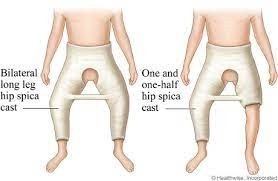An older patient who had knee replacement surgery 2 days ago can only tolerate being out of bed with physical therapy once a day. Which problem should the nurse identify as a priority for this patient?
Potential complication, Fluid and electrolyte imbalance
Potential complication: venous thromboembolism
Potential complication: Impaired surgical wound healing
Potential complication: hypovolemic shock
The Correct Answer is B
Venous thromboembolism refers to the formation of blood clots in the veins, which can lead to serious complications such as pulmonary embolism. After surgery, immobility and reduced activity can increase the risk of developing blood clots. Therefore, it is crucial to prioritize measures to prevent venous thromboembolism, such as early mobilization, compression stockings, and anticoagulant medications, to ensure the patient's safety and well-being.
Nursing Test Bank
Naxlex Comprehensive Predictor Exams
Related Questions
Correct Answer is A
Explanation
A 3% saline solution is a hypertonic solution used to increase serum sodium levels in cases of severe hyponatremia. However, it can lead to fluid overload and pulmonary edema. The presence of crackles throughout both lung fields indicates the accumulation of fluid in the lungs, which is a serious adverse outcome.
The patient's radial pulse rate of 105 beats/min is within a normal range and does not directly indicate an adverse effect of the saline infusion.
The presence of sediment and blood in the patient's urine may be unrelated to the 3% saline infusion and could indicate other issues such as urinary tract infection or kidney injury.
An increase in blood pressure from 66/50 to 122/74 mmHg is an expected effect of a hypertonic solution like 3% saline, as it can cause an increase in intravascular volume. While the increase in blood pressure is significant, it does not represent an adverse outcome specific to the infusion itself.
Correct Answer is D
Explanation
Hip spica casts are typically used to immobilize the hip joint and are often used in the management of hip dysplasia or after surgery. These casts can cause restricted mobility and limit blood flow to the legs and feet, which can lead to complications such as swelling, decreased circulation, or pressure sores.
Checking capillary refill in the toes is a critical nursing intervention to assess for the presence of adequate circulation and blood flow to the affected limb. If capillary refill is slow or absent, it may indicate compromised circulation and require immediate intervention to prevent further complications.
Palpating a brachial pulse, assessing bilateral radial pulses, or auscultating the heart rate apically are not the priority nursing actions for an infant with a hip spica cast. While monitoring vital signs and circulation are important components of nursing care, the priority at this stage is to assess and manage the immediate postoperative needs of the patient, including monitoring for potential complications related to the hip spica cast.

Whether you are a student looking to ace your exams or a practicing nurse seeking to enhance your expertise , our nursing education contents will empower you with the confidence and competence to make a difference in the lives of patients and become a respected leader in the healthcare field.
Visit Naxlex, invest in your future and unlock endless possibilities with our unparalleled nursing education contents today
Report Wrong Answer on the Current Question
Do you disagree with the answer? If yes, what is your expected answer? Explain.
Kindly be descriptive with the issue you are facing.
